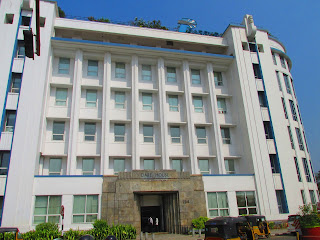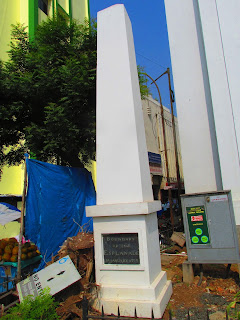Magistrate Court - A Heritage Building of Madras

Maybe, because of two magnificent British-era structures on either side of this structure, the Chennai Metropolitan Magistrate Court in Rajaji Salai has become less attractive. And hardly anyone believes that it is also a British-era heritage building. The court is one of those Colonial heritage buildings that still survive in the George Town locality of Madras. The three-storied building appears rectangular, and its architecture is slightly unique. The facade of the building has a series of symmetrical arches framed by rectangular panels. This attractive design is the major highlight of the building. This structure was built in the 1880s and was inaugurated in 1890 CE. Happy travelling.




